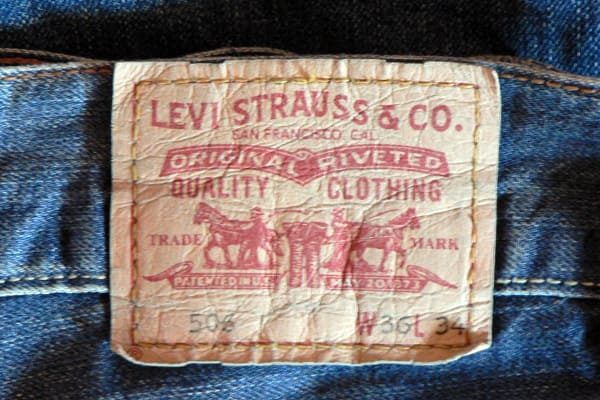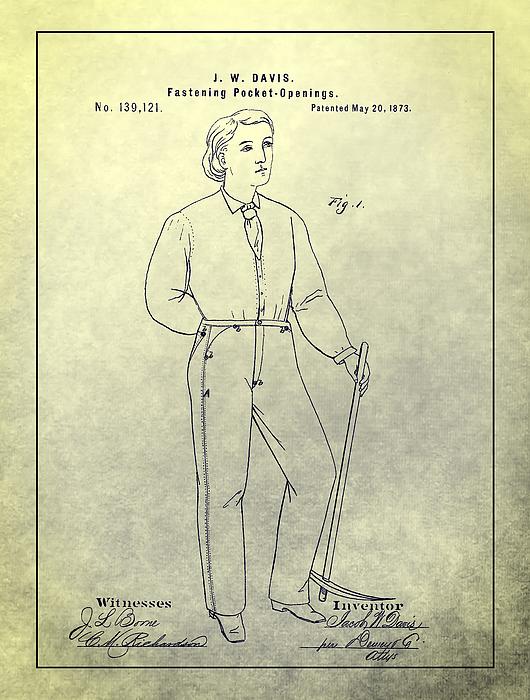If you want to tone down the fancypantsery and rock some steampunk casual, slip on a pair of Levis. History, technology and fashion meet in a pair of Levi’s 501 jeans.
Jeans and denim have an odd little history relating to the material. Denim dates back to the 17th century, as does a material called jean. Originating in Genoa, Italy, jean weaves two same-colored thread. Denim weaves one colored thread with a white one. Both are durable, but over the years denim remained both more durable and expensive. Pants made of jean were appropriately called “jean pants”. Levi Strauss denim pants were called “overalls” until teens started calling them “jeans” in the 1950s.
Levi Strauss was born in Bavaria in southeastern Germany in 1829 and moved to New York where he joined the family in J. Strauss Brother & Co. dry goods. In 1853, he headed west where he continued the business, eventually renaming it Levi Strauss & Co. One of his customers, Jacob Davis, a clever tailor from Reno, NV, offered a game-changing business proposition. Davis added rivets at stress points on pants. He proposed to Strauss that they apply for the patent together. On May 20, 1873, they received patent #139,121 for Improvement in fastening pocket-openings. A riveting development!
Due to a loss of records from the 1906 San Francisco earthquake, some of the early history of Levis Strauss has been lost. We know that in 1886, the Two Horse leather patch was used on the pants, or “waist overalls”, as branding. The lot 501 designation was applied to the XX waist overall in 1890. Levi Straus died on September 25, 1902. However, there has been documentation of the trouser technology. In 1922, belt loops were added, but they still kept the suspender buttons. Beginning in 1937, the back pockets were sewn over the rivets to comply with customer complaints about scratched saddles and furniture. In 1954, the zipper fly was added to the 501Z when sales expanded to the East Coast, where the button fly was not common.
Jeans add an element of historical significance to an outfit. However, if you want the real deal, be prepared to spend a pretty penny. In 1997, Levis Strauss & Co. spent $25,000 for an original pair of 1890 501s!



There are no voices yet... Post-script us a message below, won't you?